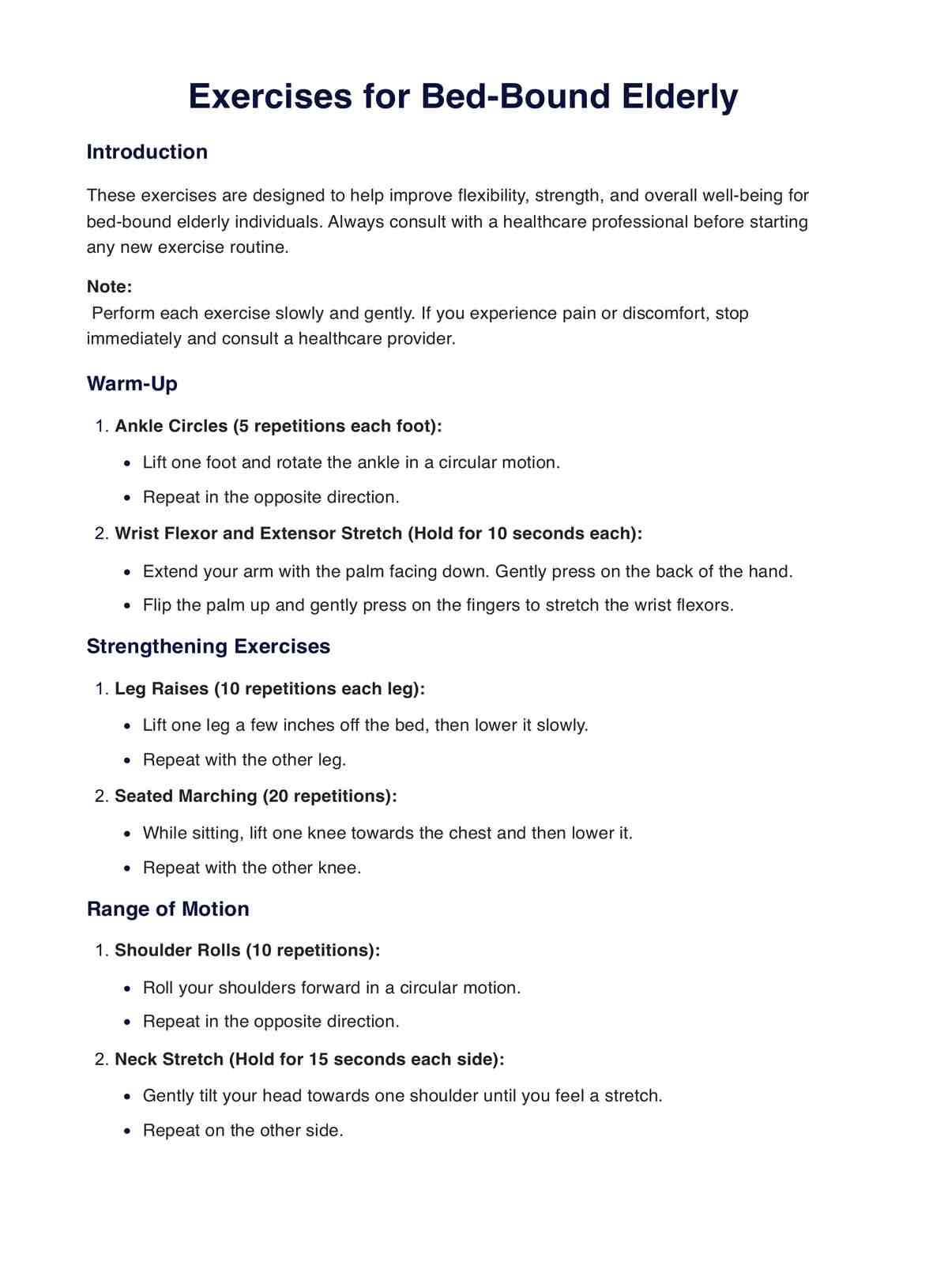To maintain mobility, bedridden individuals can perform gentle exercises such as leg lifts, side arm raises, circles, and neck stretches. Consult a healthcare professional to ensure these exercises align with your health needs.

Exercises for Bed-bound Elderly PDF
Download Carepatron's Exercises for Bed-bound Elderly PDF here. These exercises can help improve mobility, circulation, and overall well-being.
Use Template
Exercises for Bed-bound Elderly PDF Template
Commonly asked questions
Start with simple exercises like seated leg lifts and ankle rotations. Gradually progress to more challenging activities under the guidance of a healthcare provider to rebuild leg strength.
Begin with low-impact exercises like walking or swimming, gradually increasing intensity. Consult a healthcare professional to create a personalized plan that considers your health status and gradually reintroduces physical activity.
EHR and practice management software
Get started for free
*No credit card required
Free
$0/usd
Unlimited clients
Telehealth
1GB of storage
Client portal text
Automated billing and online payments











